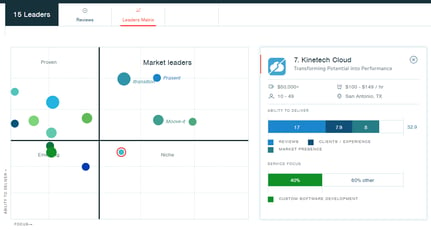As a business executive, you have or will experience an information technology project gone wrong (over budget, over time, or over scoped (scope creep)). The reasons why vary, but usually the problems result from miscommunication between the stakeholders. For decades, the majority of businesses have used the V-Model for software delivery and the results have been disastrous for shareholders ($100 Million Systems Implementation Failures).
The cartoon below sums it up succinctly:
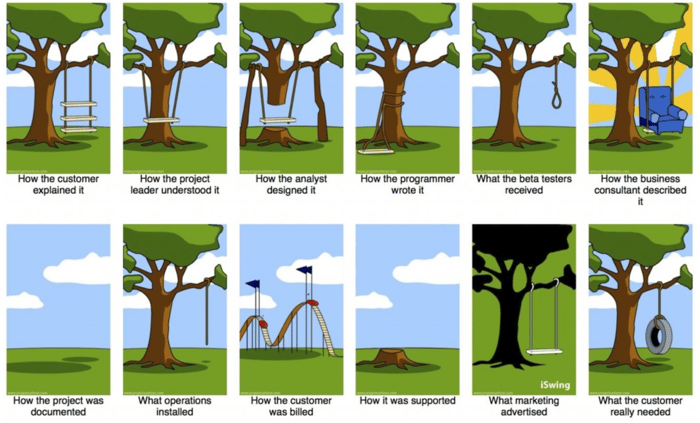
Meanwhile, the costs of computing have dropped significantly as microprocessors have evolved pretty closely to Moore’s law. This results in smaller computers that are increasingly more powerful and ever cheaper to make. Just imagine your iphone today (~$1000) versus mainframe computers 20 years ago ($1 Million+).
If the costs of computing have dropped why do multi-million / billion dollar IT implementation failures still occur (i.e. healthcare.gov)?
The truth is the V-model for software delivery is inadequate in the current business environment.
A complex system that works, is invariably found to have evolved from a SIMPLE SYSTEM that WORKED. A complex system designed from scratch never works, and cannot be patched up to make it work. You have to start over with a simple working system. - John Gall’s Law
A Better Way Forward - Agile Software Delivery In Practice:
At Kinetech, we use agile software delivery every day to support our clients and thousands of users. There are several variation of agile, but the process is rather straightforward.
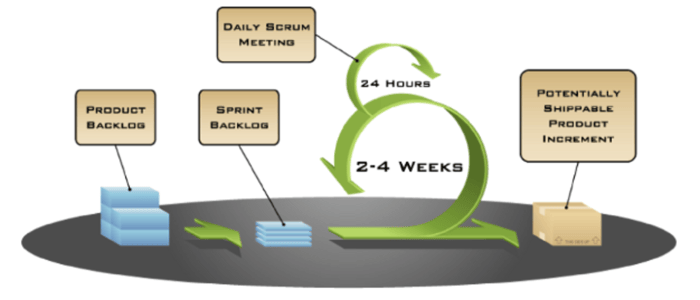
- Plan: Product Backlog - Gather a list of requirements (product backlog)
- Prioritize: Sprint Backlog - what absolutely has to be completed before you can move forward?
- Sprint: Develop - At the end of the sprint (2-4 weeks) get your executable code together, and deploy it for the customer / end user to test
- Deploy: Launch Executable Code - Receive feedback, if the user is satisfied, close the story, if not, capture why and re-prioritize in the next sprint
- Iterate: Repeat steps 1-4
Kinetech designs, implements, delivers, and supports information technology solutions that differentiate our clients in the marketplace. A picture is worth a thousand words, so here are the first four steps:
Plan / Prioritize: Stories are pulled from the backlog, organized into a sprint, prioritized and developed. Status are either To Do, In Progress, or Done.
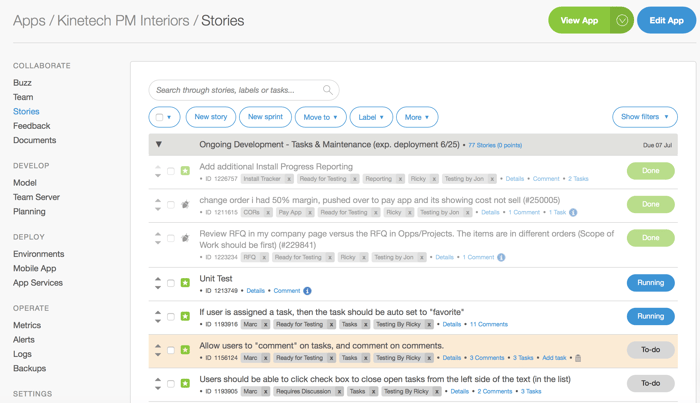
Sprint: Stories are integrated into our development environment, and unit tested as development occurs:
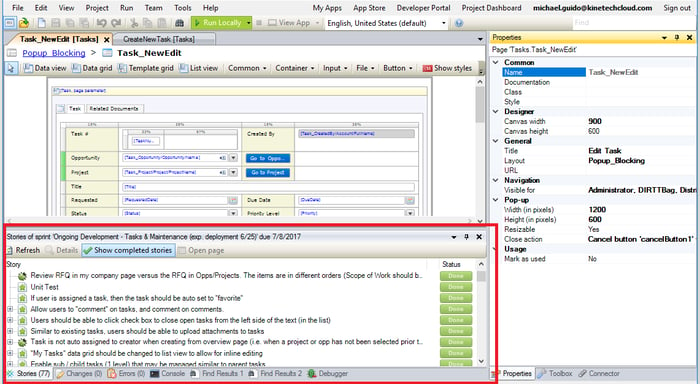
Deploy / Feedback: At the end of the sprint, the software is deployed for testing. Users submit feedback (issues / questions) if the application does not meet their expectations.
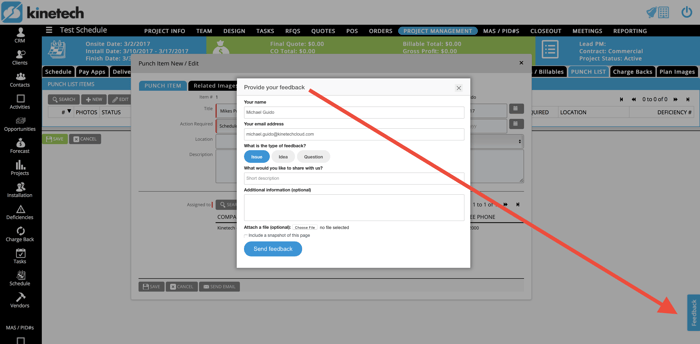
By using the agile delivery model as opposed to the V-Model, Kinetech business engineers interact directly with the end user. As their feedback is incorporated along the way, the client has a direct impact on the direction of development, and can course correct the project if it gets off track before it becomes too late.
This article was also published on LinkedIn.
Background:
Michael Guido is the CEO of Kinetech Cloud. Prior to Kinetech, Michael was a Business Engineer and systems architect at Mendix, the leading application platform as a service. Before Mendix, Michael served as a Systems Integration and Information Technology consultant at Accenture. He advises and supports Fortune 500 and privately held enterprises to solve their most challenging technology problems.

